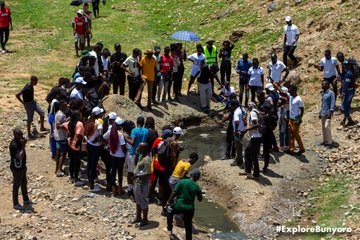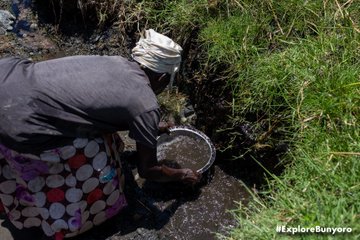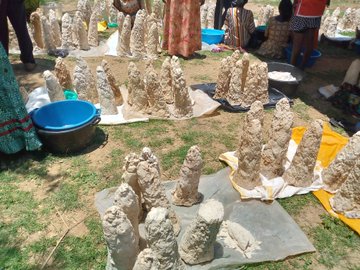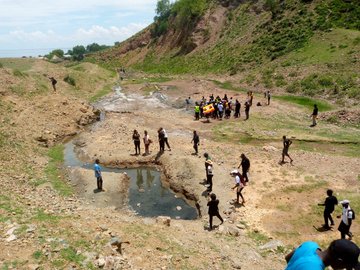The Fascinating footpath to Kibiro, Bunyoro’s salt-mining village
The site of Kibiro has been of great interest to archaeologists because of its unique salt deposits that are found near western Uganda.

With 4,146 residents, Kibiro village located in Hoima district sits at the bottom of the Western Rift Valley in Uganda.
According to Connah Graham, an archaeologist, the small fishing village in Uganda lies on the southeastern shore of Lake Albert.
The residents are unable to produce their agricultural products. To get food and other necessities, they trade with other communities.

A triangle is formed by the coastal plain at Kibiro. Its base, formed by the bottom of the escarpment, is much wider than the narrow plain to its northeast. To its southwest, between Kibiro and Hoima, there is no plain at all.
Among the many wonders of nature, Bunyoro’s small village rich in salt is connected only by a dirt track. However, this has never stopped tourists from visiting the salt gardens and hot springs. They hike the hills too.
In his writing, Graham reveals that the soil at Kibiro is shallow and rocky and the adjacent escarpment creates a local rain shadow, something we vividly saw.
Many of the tourists who failed to hike made use of motorcycles to help them climb the hills.

Kibiro village is divided into two main parts by the Mukihanga Valley: The larger part of the village lies to the south-west and is known as Bubare and the part to the north-east is known as Kihenda.
During a campaign to explore Bunyoro, Charmar News engaged Abigaba Godfrey, the Chairperson of LC 1 Kibiro village.
Abigaba mentioned the road as the leading challenge because it makes the village inaccessible. The road could link them to the markets to sell their salt.
Abigaba, together with the residents requested the government to run to their rescue and construct a road that could link them to ready markets for their products.
“Women residing in this village have for years been carrying out salt mining whereas their husbands or men, mainly do engage themselves in fishing,” he said.
When asked how the village has been benefiting from the tourists, Abigaba noted that tourists are usually charged a fee, of as little as Shs10,000 each to enjoy the beauty and nature of Kibiro village.

As Graham writes, the coastal plain at Kibiro has two levels: a slightly higher area of gently sloping, usually stony ground that abuts the escarpment base; and a lower, flatter, often swampy, sand area adjacent to the lake but separated from it by two beach ridges.
Due to its cultural value, this site was added to the UNESCO World Heritage Tentative List on September 10, 1997.
Also known as Kibiro salt gardens and hot springs, Abigaba noted that revenue collected from tourists who visit the site hasn’t been enough to manage their challenges as a community.
Jackline Nyirakiiza Besigye, the acting commissioner of museums and monuments, highlighted that the site has been in existence for over 1000 years.
She said women have been mainly engaging themselves in this activity of salt mining because it’s hereditary and has no health effect on them.

No record of the salt-production process exists before the reports of Europeans in the 1800s.
However, the salt-production techniques described by early Europeans differ in many ways from the techniques employed by present-day Kibiro residents.
Kibiro village is also known for having a windy and hot climate with yearly temperatures ranging between 22.0 °C and 29.3 °C.
The site of Kibiro has been of great interest to archaeologists because of its unique salt deposits that are found near western Uganda.







